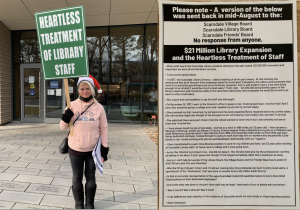The Halloween Stampede: Deadliest Crush in Korean History
November 13, 2022
Halloween is a time when people of all ages can have fun and let their inner child come out. People often dress up as fictional characters and go to parties to celebrate the occasion. However, one such celebration quickly evolved into a disaster as gathering crowds crushed each other.
On Saturday, October 29th, more than 151 people were killed during a Halloween celebration in Seoul, Korea. According to BBC News, over 100,000 people had gathered in the vicinity and many were concentrated around the Itaewon metro station. Though the stampede started with only a few pushes from men in the crowd, it escalated into chaos which was exacerbated by the lack of space. So many people were injured that onlookers had to step in and perform CPR since the emergency response team was simply not enough. Reports were made to the police hours before any actual injuries occurred, but the officials did not treat the calls seriously and the few law enforcement available were vastly outnumbered by the crowd.
Many world leaders, such as British Prime Minister Rishi Sunak and French President Emmanuel Macron, have expressed their sympathy with Korea. However, this tragedy certainly calls into question many of the current regulations in place for celebrations. “This crush will certainly not affect how Halloween is celebrated or portrayed, but may be a bad look for Korea,” said Evan Lee ’25. President of South Korea Yoon Suk-yeol called for investigations into the cause of the crush and announced a period of national mourning. “They should have more security, especially on holidays, to avoid overcrowding. It’s easy to let your guard down during celebrations like Halloween, and that’s the exact reason why tragedies like this happen,” adds Bryan Shi ’23.
Back in 2021, there was a crowd crush in the United States that occurred at popular rapper Travis Scott’s Astroworld music festival. Similarly to the Halloween crush in Korea, more than 100,000 people were reported in attendance and the number of attendees vastly out-proportioned the number of staff. Tragedies like this have always occurred, and it is imperative that these countries can take away lessons from past tragedies and figure out how to prevent future disasters.


























